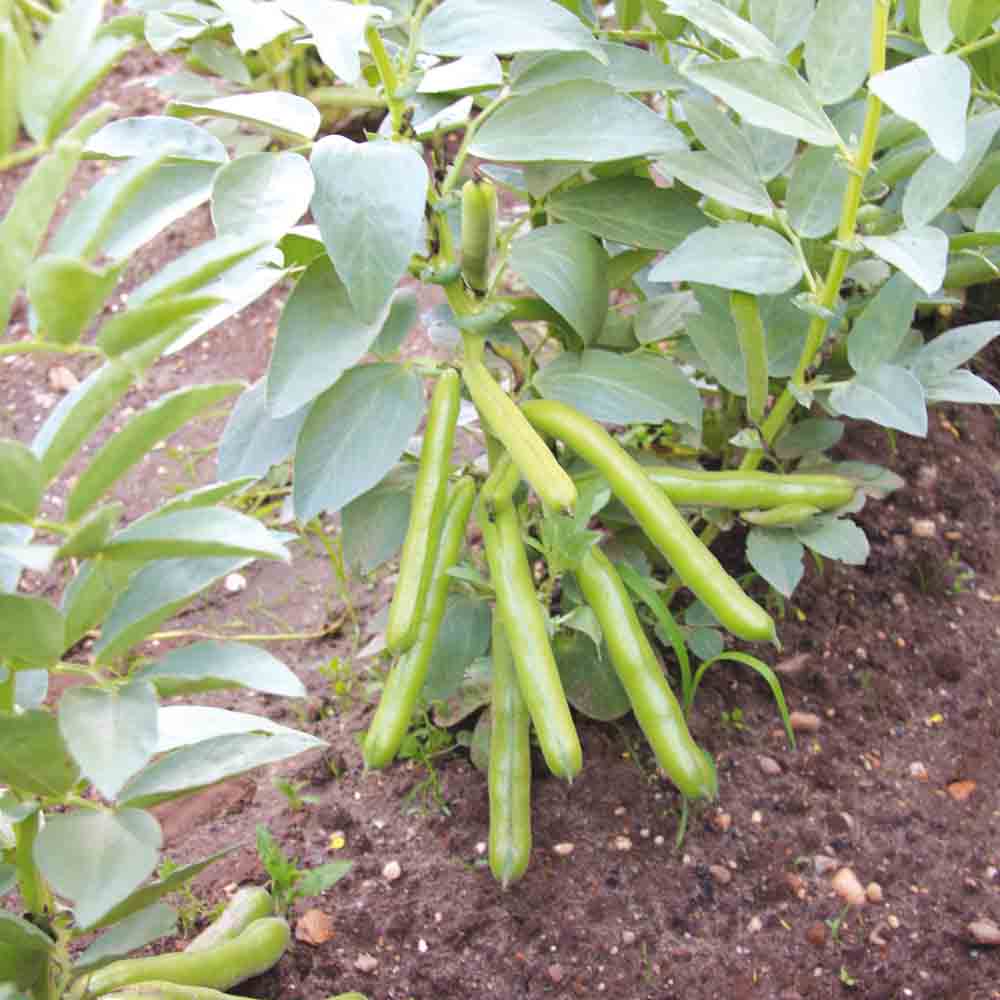FEVE RATIO AB
Vicia faba
The Ratio bean is an early, branched variety, about 1 m tall, whose numerous 18 cm pods produce 4 to 5 white beans. It is not very susceptible to lodging. The white beans are tasty, turning brown when cooked.
Eat raw when half-ripe, crunchy with salt or butter, cooked with bacon, cream, in soups or purees.
Successful sowing of broad beans Ratio
Sowing: Sow in February/March in furrows 50 cm apart and 5 cm deep, one seed every 10 cm, then cover. Earth up the plants when the stems reach 30 cm in height.
Hoe and weed.
It is also possible to pinch the stems between the 5th and 7th group of flowers to avoid attacks from aphids which generally settle at the top of the plant; this also promotes the development and quality of the pods.
Good associations
Broad beans thrive alongside corn, potatoes, celery, lettuce, and artichokes. However, avoid growing them alongside bulb vegetables (onions, garlic, and shallots).
To avoid frequent aphid attacks, we recommend growing dill between the rows of beans.
Harvesting beans
3 to 4 months after sowing.
The enemies
Mildew can damage broad bean leaves. They become covered with a gray mold and eventually die. Spraying with Bordeaux mixture can be used as a treatment at the first sign of disease. A good preventative measure is to spray the soil with Nettle Manure before planting.
Bean rust is notable for the rust-colored blisters it leaves on the leaves. It is treated in the same way as mildew.
Aphids often attack broad beans. If preventative measures have failed, you may want to consider treating your plants with pyrethrum-based aphid control.







